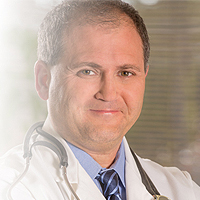The motivational factors and adverse events experienced by healthy volunteers donating bone marrow for research
Published on: 5th December, 2019
OCLC Number/Unique Identifier: 8479094098
Background: With the advancement of cell therapy research, there is an increasing need for healthy volunteers (HV) to donate small volumes (30 ml) of human bone marrow (BM). The BM procedure required to procure small volumes is invasive, although short-lived (25 seconds), is not without risk. To ensure a sustainable supply of BM for research and cell therapy, greater information of the risks and factors that motivate HV to donate small volumes of BM will help optimize the procedure and HV enrolment, ensuring donors are fully informed of the potential risks.
Objective: To identify the adverse events (AE) experienced by HV during and after small volume BM procedure and understand the motivating factors that influence HV to donate BM for research.
Method: HV (n = 55) who donated BM (30 ml) for scientific research and provided informed consent were administered a questionnaire to identify the type, duration and severity of AE experienced during and post-BM aspiration; and to determine the motivating factors that influenced their willingness to donate BM.
Results: Pain was experienced by 89% of participants during the BM procedure with moderate grade reported by 40%. One/more of the following AE were experienced by 73% of the volunteers post-BM procedure: pain, fatigue, site reaction, nausea and transient hypotension. AE resolved within an average of three days. The reported motivational factors ranked in the following order: first, to advance research for the benefit of future patients; compensation for participation; free medical check-up; lastly, the research question was interesting.
Conclusion: Young HV, motivated primarily by altruism and financial compensation, risk the occurrence of transient AE following donation of small-volume BM for research.
Cranioplasty with preoperatively customized Polymethyl-methacrylate by using 3-Dimensional Printed Polyethylene Terephthalate Glycol Mold
Published on: 30th November, 2018
OCLC Number/Unique Identifier: 7935923400
Cranioplasty is a reconstructive procedure for the repair of skull defects or deformities. Polymethyl-methacrylate (PMMA) is a commonly used alloplastic material when autologous bone is unavailable. However, manual shaping of bone cement for frontal and orbital bone defects is challenging and may not lead to cosmetically satisfactory results. Advances in computer-aided 3-dimensional (3D) design and printing technology allow the production of patient-customized implants with improved cosmetic and functional results. A 39-year-old female patient presented with right-sided frontal swelling and headache. Computerized tomography (CT) demonstrated a right frontal calvarial mass extending to the orbital wall. The boundaries of the lesion were marked using a 3D design software. A polyethylene terephthalate glycol (PETG) mold was manufactured with help of a 3D printer. Artificial bone flap was formed by pouring PMMA into the mold. After surgical resection of the calvarial mass, customized PMMA implant was applied with titanium mini plate and screws. The defect was closed properly with good aesthetic results. Production of customized PMMA cranioplasty implants with 3D printed molds is a useful technique and can be preferred for calvarial defects due to skull tumors, bone resorption and traumatic bone loss.
Correlation of plasma protein from MDS, young and elderly patients by SDS-page
Published on: 11th November, 2019
OCLC Number/Unique Identifier: 8330254423
Summary: Myelodysplastic Syndrome (MDS) is a heterogeneous group of clonal hematopoietic malignancies characterized by progressive cytopenias, ineffective hematopoiesis, bone marrow hypercellularity and transformation to acute myeloid leukemia (AML).
Objectives: Identify plasma proteins from MDS patients and from two healthy controls groups (young and elderly) by SDS-Page.
Methods: Plasma from 08 healthy young, 08 healthy elderly and 08 MDS patients were used for this study. Proteins were fractionated, precipitated, used for SDS-PAGE gel analysis, stained with comassie brilliant blue, scanned and bands were analyzed.
Results: It was possible to identify in both, 20% fraction and supernatant, proteins that were differentially expressed in each group. The ones that have showed some clinical relevance. Fibronectin was highly expressed only in the young control group. α2-Macroglobulin was also expressed in both control groups, but it was not expressed in the MDS group. Haptoglobin was highly expressed only in the elderly control and SMD groups.
Conclusion: Protein expression in plasma can be a biomarker for MDS, and may play a key role in the process of aging and hematologic malignancies development.
Neuroscience, Rehabilitation and New Technologies: Perspectives and critical points for a synergistic development
Published on: 28th November, 2018
OCLC Number/Unique Identifier: 7935874172
The growth of Rehabilitation, in all of its field and mainly in neuro-rehabilitation applications and settings, is showing increasingly strong interaction with the growth of technology and its innovative applications.
Nevertheless, is should be stressed that the use of machinery has always been a fundamental mainstay of Rehabilitation practices facing the whole person’s aspects and involving the whole physical world around the disabled people as it is: as it was in the past with physical exercises, physical modalities, and in many other trainings and activities that employed physical and technological means as Aids, Prostheses and Orthotics.
Drug abuse and its ramifications on skeletal system
Published on: 5th November, 2019
OCLC Number/Unique Identifier: 8330461480
The purpose of this study is to highlight the drug abuse hazards and preventive aspects. From a public health perspective, substance abuse has long been a source of major concern, both for the individual’s health and for wider society as a whole. The UK has the highest rates of recorded illegal drug misuse in the western world. In particular, it has comparatively high rates of heroin and crack cocaine use. Substances that are considered harmful are strictly regulated according to a classification system that takes into account the harms and risks of taking each drug. The adverse effects of drug abuse can be thought of in three parts that together determine the overall harm in taking it. Some addictive substances are more damaging to the skeletal system along with the others. In this review article, an effort has been taken to elaborate the effects of addictive drugs on human highlighting these most problematic substances for bones and also the promising potential prevention aspects of drug abuse.
Serum MicroRNA-155 in Acute Graft-Versus-Host-Disease (aGVHD)
Published on: 16th August, 2019
OCLC Number/Unique Identifier: 9059393117
Allogeneic hematopoietic stem cell transplant (alloHSCT) is a curative treatment for many hematologic malignancies. Unfortunately, about 30-50% of all recipients undergoing alloHSCT develop acute graft-versus-host-disease (aGVHD), which is associated with high morbidity and mortality [1,2]. Treatment of aGVHD involves the use of immune suppressive drugs such as high dose of steroids that leads to further immunosuppression and risk for opportunistic infections. Often patients are refractory to steroids therapy making the prognosis dismal. Thus, it is critical to identify robust biomarkers to detect aGVHD before onset of clinical symptoms so that therapeutic strategies can be implemented that may result in better treatment responses and less toxicity.
Vigour of CRISPR/Cas9 Gene Editing in Alzheimer’s Disease
Published on: 5th October, 2018
Ailment repairing regiments has turn out to be arduous, despite a plenty of understanding and knowledge acquired in the past relating to the molecular underpinnings of Alzheimer’s disease (AD. Umpteen clinical experiments targeting the fabrication and accumulation have been turned fruitless to fit potency standards. The tests aiming beta-amyloid hypothesis also turned futile making it exigent for further handling tactics. The new emanation of a comparably candid, economical, and punctilious system known as gene editing have showed light in path of cure for AD by CRISPR/Cas9 gene editing. Being a straight approach this procedure has already shown assurance in other neurological disorders too such as Huntington’s disease. This review standpoint the immanent service of CRISPR/Cas9 as a remedial option for AD by aiming on specific genes inclusive of those that induce early-onset AD, as well as those that are substantial risk components for late-onset AD such as the apolipoprotein E4 (APOE4) gene.
Neurobiology of Common Sleep Disorders
Published on: 14th August, 2018
OCLC Number/Unique Identifier: 7844539109
Sleep disorders in human are common and detrimental to general health of all age groups. While the neurobiological mechanisms of sleep disorders are not yet fully understood, recent advances in research on the sleep-wake regulation mechanism, genetic and epigenetic factors, cognitive, emotional and physiological changes related to sleep have shed light on the mechanistic basis of sleep disorders. Over the past two decades, studies in Drosophila have yielded new insights into basic questions regarding sleep function and regulation. More recently, powerful genetic approaches in the fly have been applied toward studying primary human sleep disorders and other disorders associated with dysregulated sleep. In this review, we discussed recent advances in neurobiology of sleep-wave cycle and common sleep disorders. Understanding these mechanisms are important in the diagnosis, treatment and prevention of these common disorders.
Bone marrow histology in CALR mutated thrombocythemia and myelofibrosis: Results from two cross sectional studies in 70 newly diagnosed JAK2/MPL wild type thrombocythemia patients
Published on: 21st June, 2019
OCLC Number/Unique Identifier: 8180078896
The clinical phenotypes in 268 JAK2V617F mutated MPN patients in the Seoul study were PV in 101, ET in 95 and MF in 78 and 56 CALR mutated MPN consisted of PV in none, ET in 40 and MF in 16 cases. CALR mutated MPN patients were younger than JAK2V617F mutated MPN patients (mean ages 57.5 and 66 years), had lower values for values for leukocytes (8.6 vs 11.9x109/L) and higher values for platelets (898 vs 643x109/L respectively). Bone marrow histopathology in 268 JAK2V617F mutated MPN patients in the Seoul study was featured by an increased erythropoiesis and megakaryopoiesis (EM) in 13.5%, an increased erythropoiesis, megakaryopoiesis and granulopoiesis (EMG) in 31.3%, a normocellular megakaryocytic (M) proliferation in 29,1%, a megakaryocytic and granulocytic (MG) proliferation with a relative reduction of erythropoiesis in post-ET and Post-PV myelofibrosis in 26.2%. The bone marrow histology in 56 cases of CALR mutated MPN show a predominantly increased megakaryopoiesis (M) in two thirds and an increased megakaryopoiesis and granulopoiesis (MG) with a decreased erythropoiesis in one third.
Thirteen consecutive CALR MPN patients in the Belgian & Dutch cross sectional study presented with thrombocythemia associated with a typical PMGM bone marrow histology in 11 and myelofibrosis in 2 cases. All 11 thrombocythemia and 2 myelofibrosis CALR mutated MPN patients did not have constitutional symptoms and did not suffer from microvascular erythromelalgic disturbances, major thrombosis at platelet counts between 400 and 1000x109/L. There was an occurrence of hemorrhages at platelet counts above 1000x109/L in two CALR thrombocythemia cases.
Bone marrow histology of CALR mutated thrombocythemia in the Seoul and Belgian/Dutch study showed loose clusters of large megakaryocytes (M) with bulky, cloud-like nuclei with a normal or a minor reduction of erythropoiesis and no increase in reticulin fibers grade 0 or 1 (RF 0 or 1). CALR thrombocythemia patients show various degrees of increased bone marrow cellularity due to dual megakaryocytic and granulocytic (MG) proliferation featured by large megakaryocytes with roundish bulky nuclear forms and cloud-like clumsy nuclei, which are almost never seen in JAK2V617F ET and PV. Assessment of allele burden is an independent and most important factor for all molecular variants MPN disease burden. Overt myelofibrosis with advanced post PV and or ET myelofibrosis at the bone marrow level occurred in one third (30%) of 208 evaluable JAK2 MPN patients and in 8 (14%) of 56 CALR MPN patients in the Seoul study.
Herpes simplex virus (HSV)-1 encephalitis can induce chronic anti-N-methyl-D-aspartate receptor (NMDAR) encephalitis
Published on: 27th July, 2018
OCLC Number/Unique Identifier: 7814922521
Herpes simplex virus (HSV)-1 encephalitis is the most common infectious cause of sporadic encephalitis. Despite treatment with acyclovir, HSV encephalitis is still associated with severe morbidity characterized by persistent neurological deficits. HSV encephalitis usually follows a monophasic course, however, some patients might develop relapsing symptoms caused by the formation of auto-antibodies directed against the N-methyl-D-aspartate receptor (NMDAR). Here we present an 82-year-old male patient with HSV encephalitis who developed shortly after his hospital discharge a Post-HSV NMDAR encephalitis, characterized by recurrent epileptic seizures and deterioration of his residual aphasia. First-line immunotherapy with intravenous immunoglobulins (IgIV) was administered and the patient returned almost to his baseline residual deficits of HSV encephalitis. Subsequently, he presented with recurrent relapses of NMDAR encephalitis. Since periodic treatment with IgIV has been started the patient is seizure-free and his neuropsychiatric condition is stable. In conclusion, the recognition of Post-HSV NMDAR encephalitis is very important because neurological manifestations can markedly improve with immunotherapy. Interestingly, in some patients cerebral HSV infection seems to trigger a chronic inflammatory disorder with persistent autoimmune activation which requires chronic treatment.




